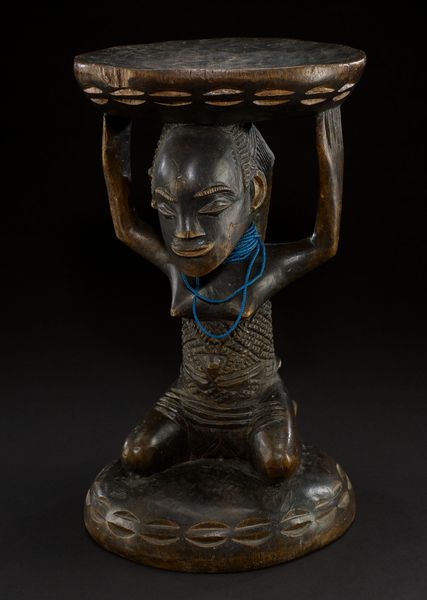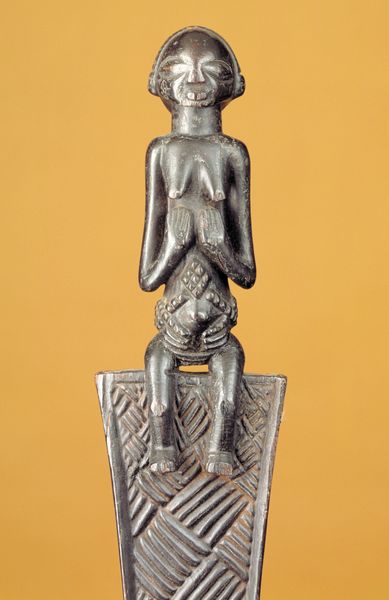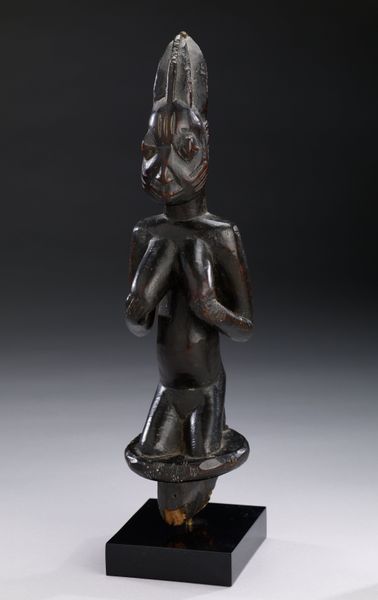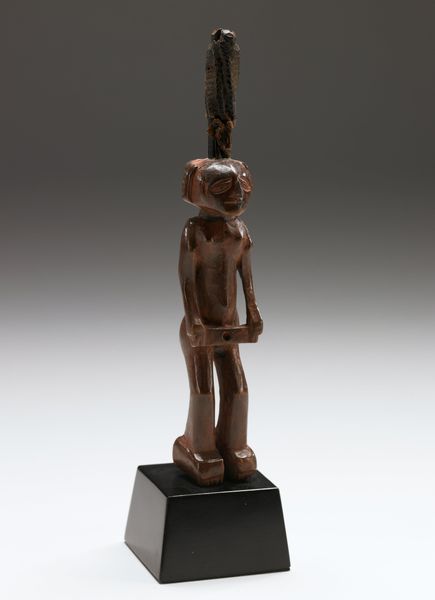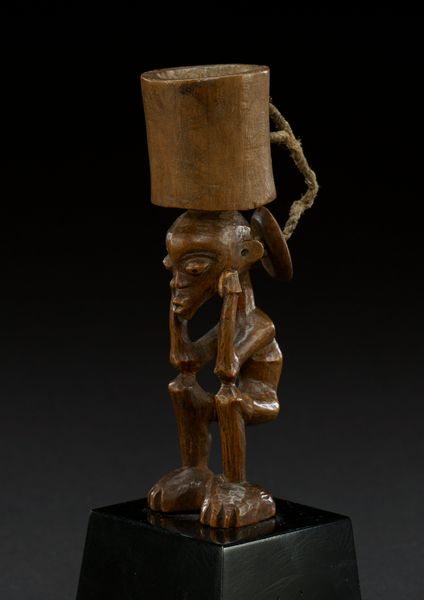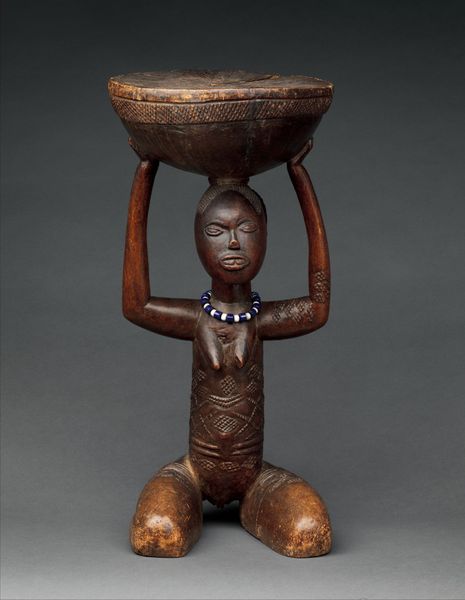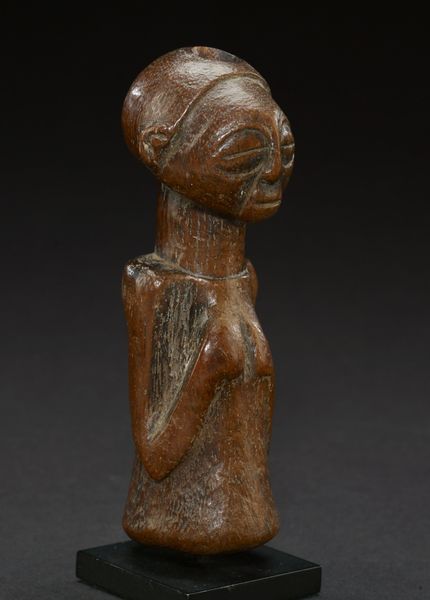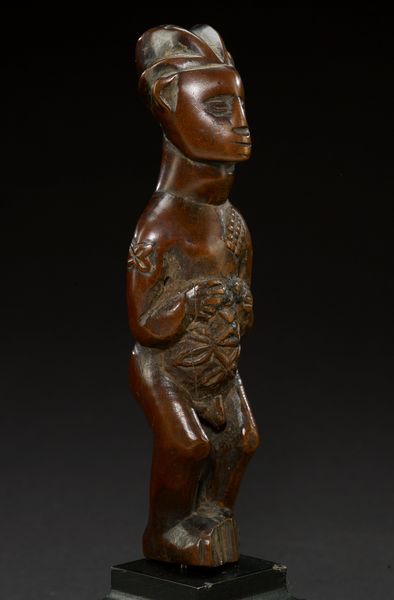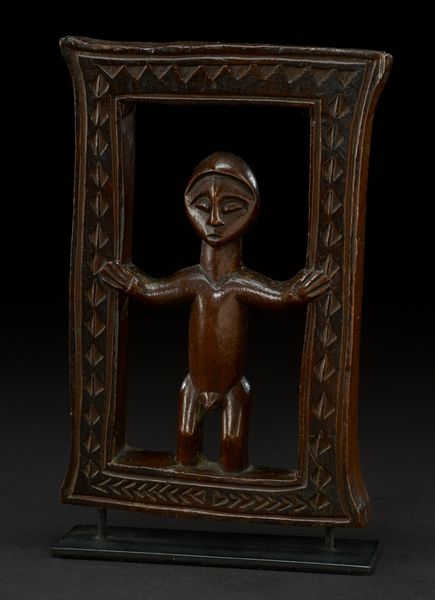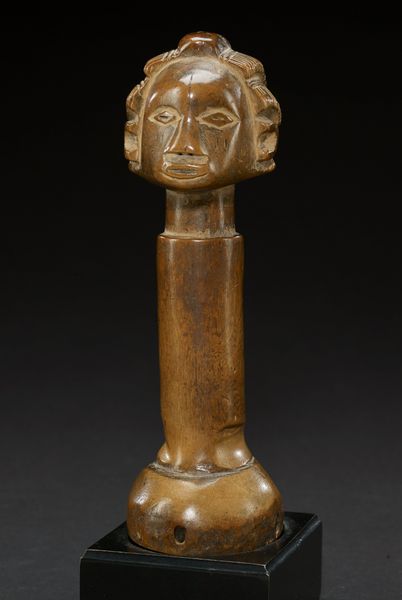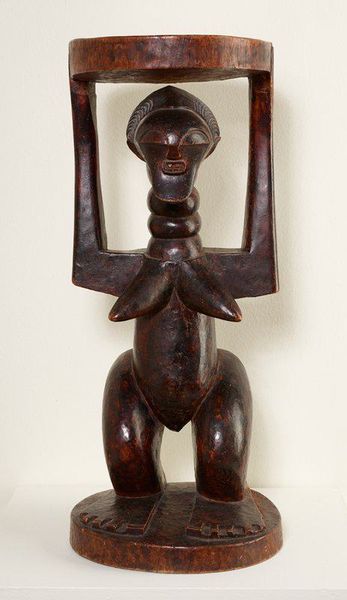
carving, sculpture, wood
#
portrait
#
carving
#
sculpture
#
figuration
#
sculpture
#
wood
#
erotic-art
Dimensions: 14 7/16 × 7 1/2 × 7 in. (36.67 × 19.05 × 17.78 cm)
Copyright: Public Domain
Curator: Here we have a wooden stool, likely from the 20th century, crafted by the Luba people. It is currently held in the collection of the Minneapolis Institute of Art. What are your first thoughts on this intriguing piece? Editor: Immediately, I'm struck by the stillness it exudes, that sense of silent strength, so evocative. The figure kneeling there... burdened yet serene, timeless, even. I see both beauty and utility interwoven. Curator: Yes, Luba stools like these were not merely functional objects. They were sacred items, symbols of kingship, with each ruler receiving a new one at their inauguration. The female figure, her identity forever linked to that ruler, served as a vital cultural symbol. Editor: The choice of the female figure intrigues me. It almost seems to speak to ideas around labor and power. Was there something specific about female imagery in Luba culture that elevated them in a such a significant ceremonial and hierarchical manner? Curator: Absolutely. In Luba cosmology, women were associated with lineage and the transmission of power. These stools, therefore, visually represent the continuity of royal authority through the female line, invoking ancestral connections and maternal power. The intricate scarification patterns also carry symbolic meanings relating to status and beauty ideals. Editor: Those scarification patterns – they’re so meticulously carved. Almost like the wood becomes a canvas bearing witness to complex social narratives and aspirations. It also has something of an erotic element, but in very subtle ways. How much can we truly decode these symbols given the distances, temporal and cultural, involved in encountering this piece today? Curator: Deciphering these symbols can be complex. But beyond specific interpretations, their presence emphasizes the importance of coded communication within Luba society. It's also crucial to avoid simply reducing everything to simple functions, as modern colonial taxonomies did in the past, often ignoring the religious meanings imbedded within so-called "useful" tools and things. Editor: A critical reminder for us, indeed. This stool then becomes not just a piece of furniture, but a potent symbol of governance, lineage, and cultural memory, powerfully embodied in a form both practical and sacred. I'll be spending more time examining Luba uses of this archetypal form and symbol of womanhood, for certain. Curator: Likewise, I will consider its emotional resonance across cultures and historical shifts, from its role in the enthronement ceremonies of a Luba King to its status today as an esteemed object within the walls of the Minneapolis Institute of Art.
Comments
No comments
Be the first to comment and join the conversation on the ultimate creative platform.
